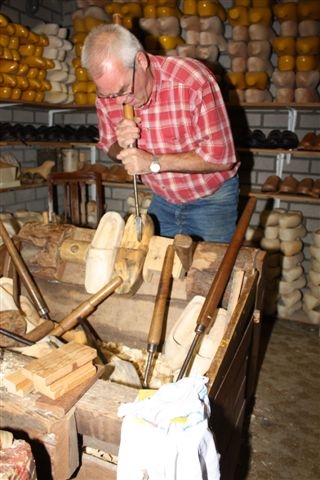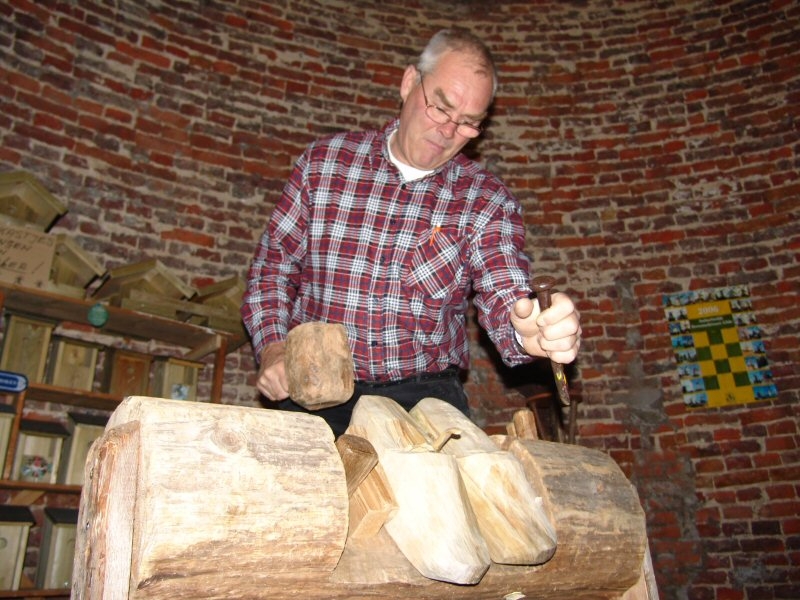The Craft:
Miscellaneous:
Demonstrations
 Carel
Jeuken from Leunen, Holland is still active as a wooden shoe
maker. He shares with us:
Carel
Jeuken from Leunen, Holland is still active as a wooden shoe
maker. He shares with us:The craft of wooden shoe making exists about 800 years now. In that time wooden shoes were common footwear all over the country. When we ask ourselves: Who was wearing them, then the answer is the less fortunate in those days. And that were gardeners, farmers, agricultural workers, foresters, laundry workers, people working in the marshes, road constructors, street cleaners, sailors, butchers, livestock dealers, bricklayers, peat-cutters and masons.
In order to make wooden shoes, one needed wood from a poplar or willow tree. There was an abundance of them in various areas and that is why there were a lot of wooden shoe makers to be found.
The ideal wood is between 30 to 35 years old and the tree has a perimeter of about 72 to 80 inches. One can get about 57 pairs of wooden shoes from 1 cubic yard (that is a little over 200 pairs from 1 registerton).
The trees were cut with a whipsaw, also called "shortiron" at the time. Then they were transported to the workshop of the wooden shoe maker with logging wheels. He cut the tree in logs of the size of a foot plus 2 inches. The extra length was needed for the heel and the nose.
The logs were cleaved into blocks with cleaving knives in 4-5-6 pieces and were shaped into a rough model with a skewed chopping axe. Then they were modeled further with a long oblong knife on a workbench with the funny name "cutting horse". After that, the shaped wooden shoes were jammed into a boring bench by pairs to be hollowed out. The drilling was performed by using a variety of drills or scoops with different sizes. With the smallest and most narrow one, you went all the way to the nose to create the proper depth inside and with the other drills you removed the rest of the wood. When all wood was removed, the inside was trimmed and smoothened. That was performed with a series of knives with special names: the heelhook, upcutter, toe knife, cleaver and flat hook. When the wooden shoes were ready they had to dry which took between 2 to 6 weeks. Finally they were sanded so they became smooth on the outside and were ready to be sold.
 For special occasions the
wooden shoes were often painted black and decorations were
cut out with a small chisel. Later on painting became a
habit and every wooden shoe maker created his own motives.
For special occasions the
wooden shoes were often painted black and decorations were
cut out with a small chisel. Later on painting became a
habit and every wooden shoe maker created his own motives.In the area of Noord-Limburg (south eastern part of Holland) wooden shoes were made until the end of last century in the towns of Venray, Swolgen, Horst, Sevenum, Heythuysen, Panningen and Posterholt. In Posterholt they made wooden shoes with machines until 2000. The original craft, making wooden shoes by hand, is still performed by me from my house in Leunen. As the fifth generation in the Jeuken family from Venray, I keep the craft alive by demonstrations. Of course as a hobby and because of archeological enthusiasm.
If you want to know more about my activities, feel free to contact me via email.